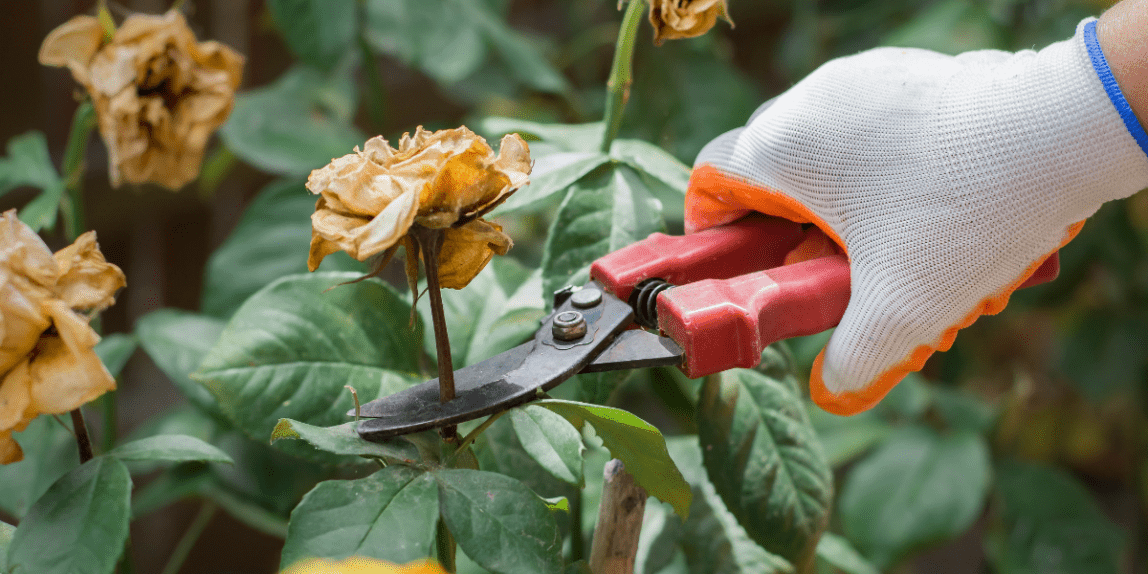Reading time: 5 minutes
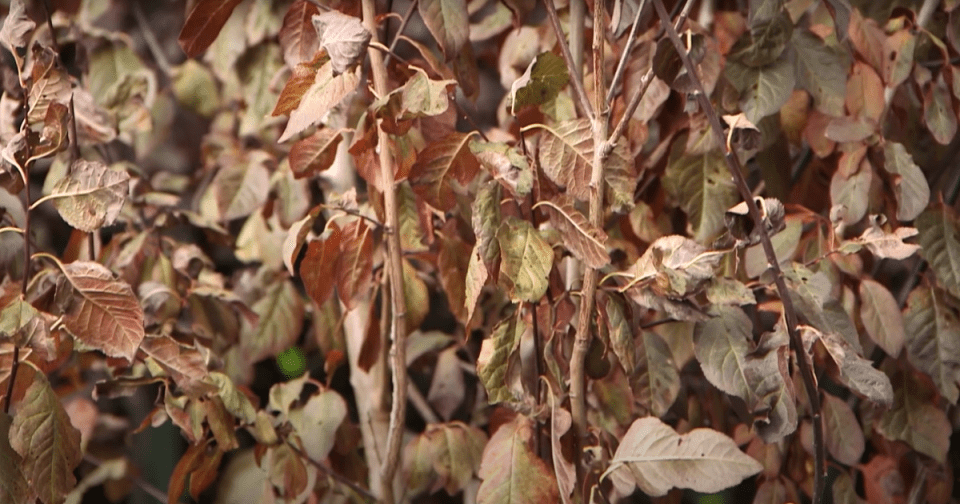
As the summer sun begins to wane, many desert gardeners might find that their once thriving landscape is now stressed due to the intense heat we experienced this year. Conditions such as high heat, dry spells, unsuitable plant selection and/or location, and extended daylight hours can put even the hardiest plants in a position to experience stress. Now that the temperatures are cooling off, we can step outside and conduct some seasonal maintenance to help our plant friends feel happy once more.
One of the primary causes of summer stress is when a plant’s root system is unable to supply water to the leaves fast enough to keep them replenished. This can result in scorched leaves or even leaf drop and can happen even if the ground appears to be wet. Many gardeners tend to over-water their plants during the summer in hopes of getting more water to the leaves; however, this usually leads to root rot.
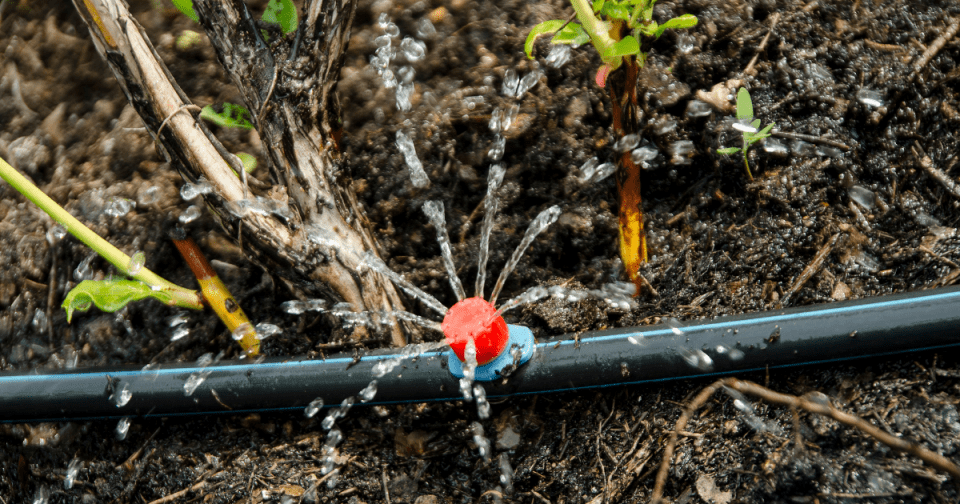
Instead, opt for deep watering 2 to 3 times per week. This allows water to reach the deepest parts of the root system and gives the soil enough time to dry out, allowing the roots to absorb oxygen, which is crucial for water and nutrient transport. Additionally, consider removing high heat conductors like rocks from around your plants and replace them with organic mulch, which will help insulate the root system, keeping it cool and moist.
If you find that your plants have experienced summer stress, you should first consider the overall growing conditions of the plant. Although all plant varieties may experience some level of stress during the summer, you might find that there are plants in your landscape that have experienced extreme stress due to improper selection, location, watering, or fertilizing. To ensure your plants thrive, always double-check that you’ve chosen the right plant for the area and have provided it with the correct growing conditions.
The best way to do this is to conduct research on the specific needs of each plant, then assess your yard and maintenance habits. Keeping a record or log of your plants in the landscape can prove invaluable. Take note of the variety, ideal growing conditions, the location you’ve selected, as well as the watering and fertilization schedule. By tracking this information, you can accurately evaluate your plant’s health and feel more confident in maintaining healthy growth.
For plants that have not experienced extreme summer stress and only require light maintenance, the first valuable step is to replenish the soil with organic matter. By doing so, you will not only improve the overall soil composition but will also provide vital nutrients to the plant. Roses are especially prone to nutrient deficiencies at the end of the summer season. A few common ones to look out for are nitrogen or magnesium deficiency or iron chlorosis.
- Nitrogen deficiency: Symptoms include pale green or yellow coloring on older leaves, reduced growth, and smaller than normal leaves. To treat, slightly increase nitrogen and overall fertility of the soil.
- Iron chlorosis: Symptoms include pale green or yellow coloring on younger leaves or leaves with white veins. To treat, use chelated iron.
- Magnesium deficiency: Symptoms include yellow coloring and white, dark brown, or purple spotting on older leaves or edges of the leaves curling downward. To treat, apply 1/4 cup of magnesium sulfate to the plant two or three times a year.
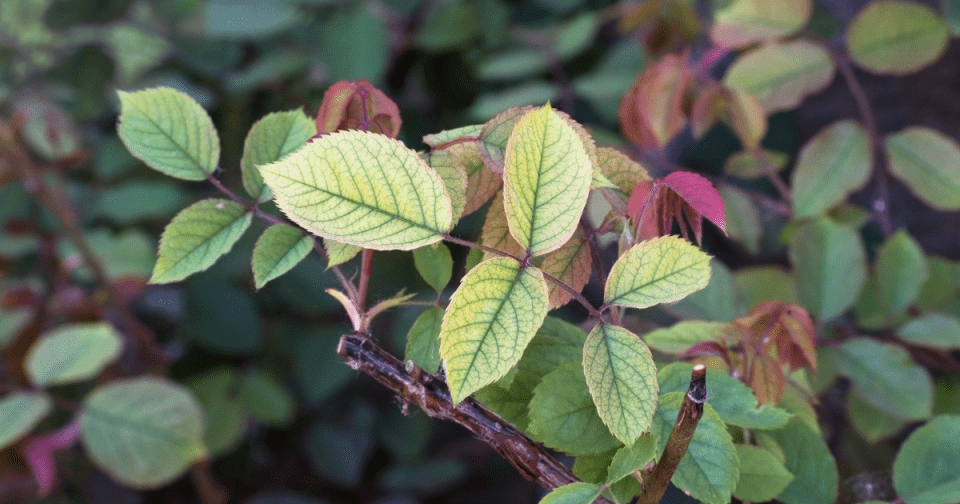
Proper pruning is another great way to help clean up your yard and remove the negative effects of summer stress. Different types of plants require different pruning, and understanding when and how to prune is essential for their health and appearance.
For trees, the focus should be on shaping young trees, correcting monsoon storm damage, cleaning up suckers growing at the base of the tree, and thinning out the crown if it appears too dense. However, it’s important to avoid hard pruning on deciduous trees until the winter months when the tree is in its dormant state.
Shrubs, on the other hand, benefit from light pruning after the blooming season to maintain a tidy appearance. Removing spent flowers from flowering shrubs can also help stimulate future blooms. For shrubs that are sensitive to cold temperatures, it’s best to wait until the spring to prune, as pruning right before winter can leave them vulnerable to frost damage.
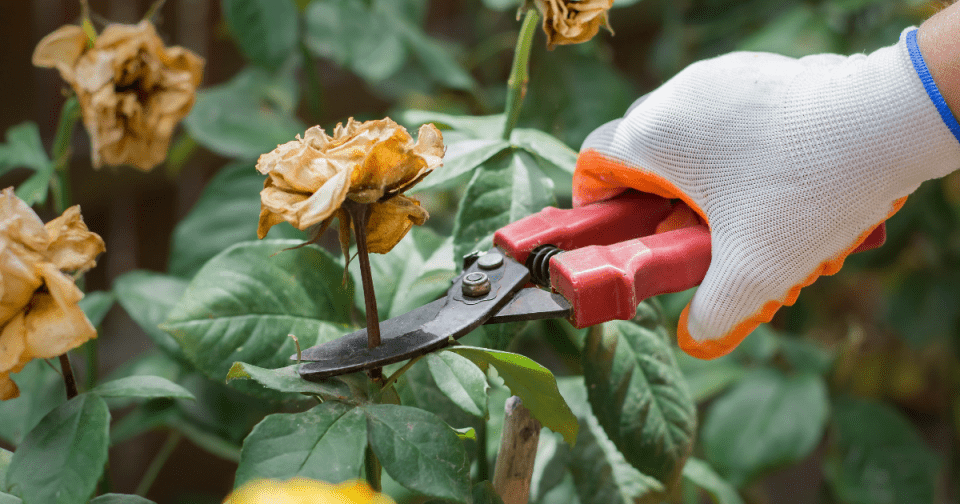
Roses require special attention when it comes to pruning. Wait until temperatures drop below 100 degrees Fahrenheit before pruning them. You can revitalize your rose by removing dead, diseased, or deformed canes. Also, be sure to eliminate any diseased or yellow leaves to prevent the spread of infection. Deadheading spent flowers will promote more blooms in the future, ensuring your roses remain vibrant and colorful. Like deciduous trees, hard pruning on roses should be kept for the winter months when it is in a dormant state.
Finally, when dealing with cacti and succulents, it’s important to check for diseased or damaged areas. If you notice any issues, cut back the affected parts severely, leaving only the healthy, uninfected sections. Agaves and yuccas will benefit from the removal of spent blooming stalks.
As we embrace the cooler weather with open arms, don’t forget that your plants will be thankful for a little rejuvenating maintenance after working so hard to survive the high temperatures. For plants that didn’t last the summer, fall is the perfect time to replace them! Be sure to survey the natural light and air conditions of the location you intend to plant in and choose a variety that will thrive in those conditions. To learn more about your current or future plants, visit www.starnursery.com for a wealth of online gardening information, or stop by your favorite Star Nursery location and speak with one of our resident plant experts!
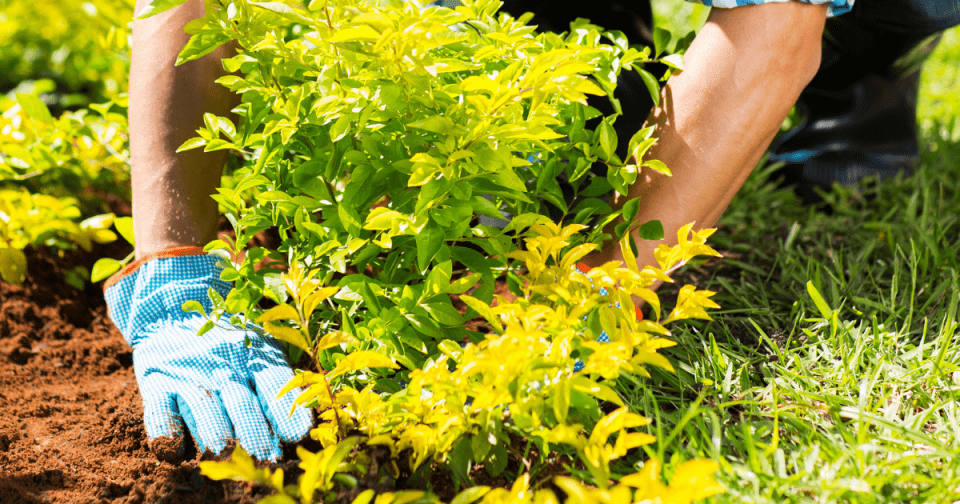
Follow us for the latest gardening news and updates!
